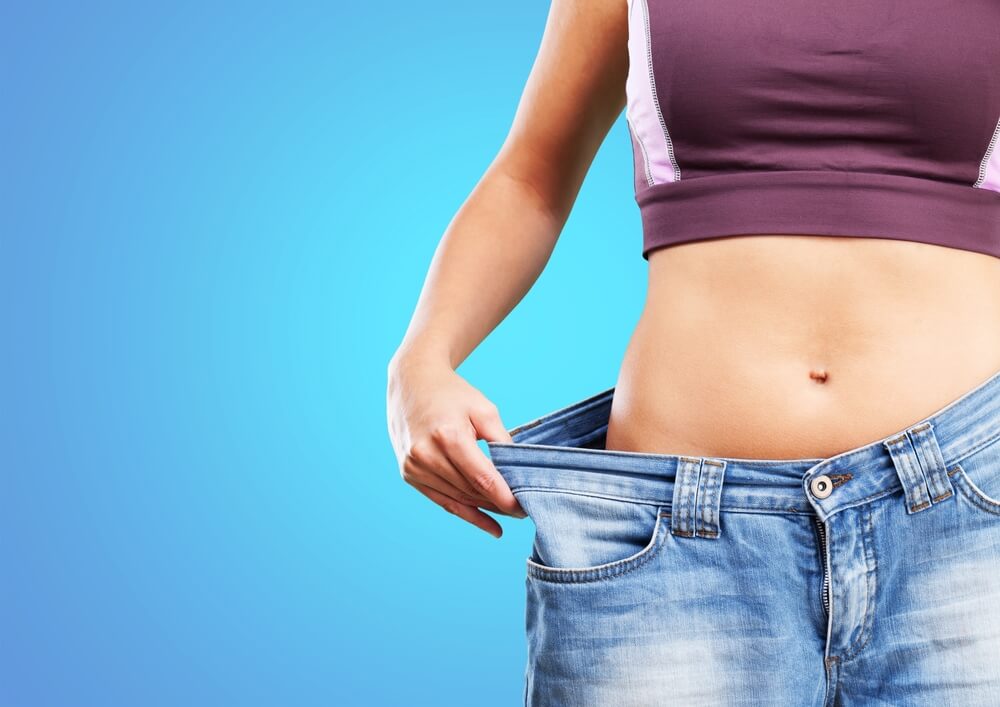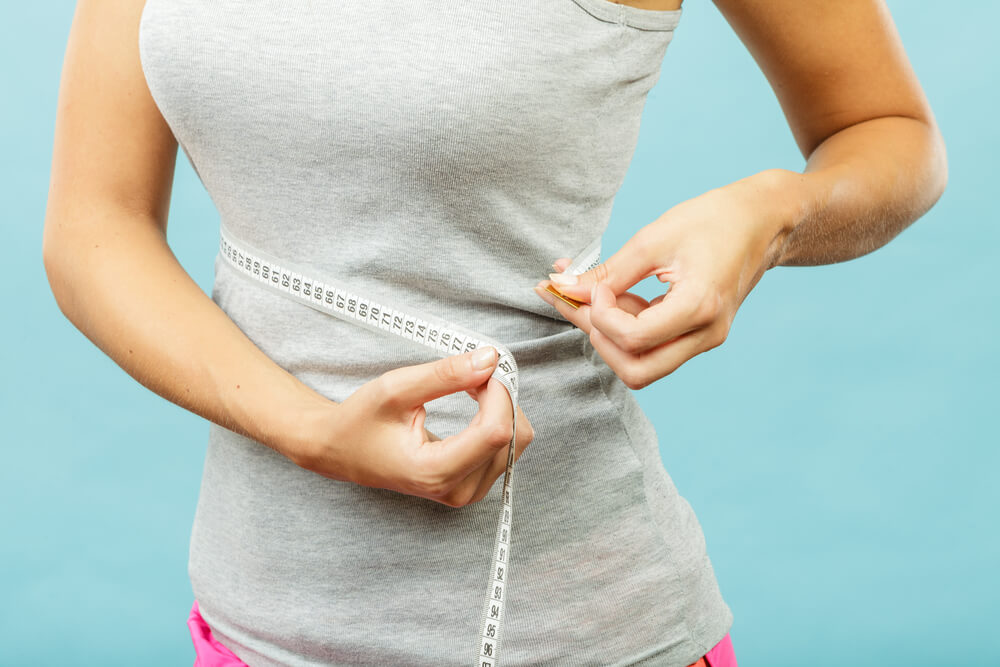
According to the Harvard School of Public Health, Americans are eating less fat than ever. While this may sound at first like a win for our obese population, it’s actually a big cause for concern. Compared to 50 years ago, we’re eating much less fat, yet diabetes is 10 times more widespread and the percentage of obese adults has tripled to a staggering 39%.
Let’s face it: Fat has gotten a bad rap.
Why would we think it’s a good idea to eat something that we so desperately try to get rid of, spending hour upon hour on the elliptical trying to shed every calorie we eat?
Because of the widespread witch hunt against fat, low-fat diets have become some of the most popular ways to lose weight. But as we’ll see, eating dietary fats (and being smart about what types) is actually productive toward your weight loss meal plan.

Rule 1. Get To Know Your Fats
Instead of avoiding fat, the new way to approach this vital macronutrient is in understanding all the many forms it appears in.
Saturated fat has always been, by far, the most misunderstood. At a chemical level, a saturated fat is composed of fatty acid chains that are fully saturated with hydrogen atoms and exhibit mostly single bonds between carbon atoms. This saturation makes the chains stiffer, and thus saturated fats are solid at room temperature. For example, think of butter or the white marbling you find in a good cut of steak or even cooled bacon fat(better research on is bacon good for you first though).
Besides being in meat and dairy products, saturated fat is also found in avocados, as well as in palm and coconut oils. This type of fat is highly important for proper body functioning as it composes about 50% of cell membranes, contributing structural integrity and stiffness. Saturated fat is also crucial in the incorporation of calcium into skeletal tissue, contributing much to bone and teeth health. As we’ll discuss later on, high dietary consumption of saturated fat has long been linked with increased incidence of heart disease. But, new findings are showing that it’s far better for us than we thought.
Unsaturated fats are the next group of fats you should be familiar with. Unlike saturated fat, this type has double bonds between carbon atoms along its fatty acid chain. Because of this structure, unsaturated fatty acids are more flexible and flowing than the saturated variety. They appear as liquids at room temperature.
There are two types of unsaturated fats: Monounsaturated and polyunsaturated. Monounsaturated fats have one double bond along their fatty acid chains and are linked with the reduction of bad cholesterol and lowered risk of stroke and heart disease. This kind of fat is found in olives, olive oil, sesame, sunflower oil, nuts and seeds. It’s a great type of fat and there’s no need to limit your intake.This will also aid you in how to get rid of lower belly fat.
This Is Why Fatty Acids Are Good
Polyunsaturated fats have more than one double bond along their fatty acid chain and come in two forms. These forms are omega-3 and omega-6 fatty acids. Omega-3s and omega-6s are both considered essential fatty acids. Anytime the word essential appears in nutrition, it indicates that the body can’t make the relative nutrient and that it must be obtained through diet.
Omega-6s are found in corn-fed meat and dairy, vegetable oils and processed foods. Omega-3s appear in oily fish such as salmon and mackerel, as well as grass fed meat, fish oil and flax seeds. The most important thing to consider when thinking of omega-3 and 6 is the ratio in our diet. Not to mention there are a ton of fish oil benefits.
Omega-3s are counter-inflammatory. Omega-6s are pro-inflammatory. When an ideal ratio is achieved between the two, your body can function properly. The optimal ratio of omega-6s to omega-3s is 1:1. Sadly, most Americans consume a ratio of 20:1 to 40:1. This disproportionate amount has been linked to a rise in mental illness, learning disorders, depression and schizophrenia. It’s also been linked to a higher risk of cancer, heart disease and arthritis.So it’s important to consider the fish oil brain benefits.
Stay Away From Trans Fats
The last type, and the one to avoid like the plague, is trans fat. Think of trans fats as Frankenstein’s monster of the fat world. Trans fats are synthetically produced and were originally made in an attempt to increase the shelf life of food and to displace saturated fats.
In essence, trans fats are mono- or poly-unsaturated fats that are denatured through hydrogenation. Unfortunately, their artificial structure makes them hard to incorporate into the body (just like Frankenstein’s monster never really fit in the human world). Scientists soon found that trans fats caused altered cell membranes and negatively affected cell membranes to the point at which cells could no longer perform their assigned functions.
This type of fat is found in deep fried foods, processed baked goods such as cookies and muffins, and shortening. Unfortunately, in an attempt to disguise the trans fat content of certain foods, it’s often listed as hydrogenated oil, partially hydrogenated oil or fractionated oil.

Rule 2. Eat Fat To Lose Fat
One thing that those who adhere to a low-fat diet are forgetting is that fat is one of the three important macronutrients. The other two are carbs and protein. We can think of each of these macronutrients as a leg to a stool. If one of the legs shortens, then the whole stool topples over and can’t function. When you limit one type of macronutrient in your diet, you incidentally replace it with another.
In most cases, people who limit their fat intake end up eating more carbs. Processed foods that are marketed as being low fat are often packed with sugar to make up for the lack in taste. It used to be that carbs were considered the most important dietary fuel source for athletes.
Recently, it’s come to light than an excess of carbs can lead to metabolic disturbances and weight gain. You can also look into carb cycling results, which is also very popular. The Dietary Guidelines Advisory Committee recommends that athletes try decreasing their carb intake and focus on incorporating more healthy fats into their diets. In fact, some athletes are encouraged to derive up to 75% of their calories from fat!
Serving up a whopping 9 kcal per gram, fat takes the cake as the most energy dense macronutrient.
Why?
Protein and carbs provide only 4kcal of energy per gram each. That’s why if you don’t have enough fat in your diet, you don’t have sufficient fuel for your fat burning plan.
Eating Healthy Fats Conditions Your Body
According to the Washington School of Medicine in St Louis, old fat sitting around your abs and thighs can’t be burned without the help of new fat. New, healthy dietary fats introduced to the body activate PPAR-alpha and fat-burning pathways in the liver, helping you to lose weight. Monounsaturated fatty acids in particular (such as those found in olive oil) are beneficial in stabilizing blood sugar levels. This helps control cravings and encourages healthy eating patterns.
By reducing your carb intake and eating more healthy fats, you can lower your overall insulin levels. In response, your body accesses fat for energy. In other words, it’ll burn off your fat reserves and you’ll lose weight and not by going to GNC for weight loss. Low-fat diets teach your body to access carbs for energy.
The result?
They’re poor at conditioning your body to burn fat efficiently.
Adiponectin levels in the body can be adversely affected by a diet that’s low in healthy fats. Adiponectin is a hormone that encourages efficient metabolism and increased rates of fat breakdown in the body. This leads to fewer food cravings. Another benefit of consuming a diet high in healthy fats is that this particular macronutrient doesn’t pass through the digestive tract quickly. That means it helps you feel satiated for longer periods of time.
Diets low in fat leave you feeling always hungry.
You will need to add a skinny fat workout for sure.
The result?
You may compensate by binging on carbs or snacking excessively between meals to quiet that empty feeling in your gut. Another benefit of fat’s slow digestion rate is that it also slows the digestion of the other macronutrients. Adding fat to your diet slows the breakdown of carbs and subsequently, your body can focus instead on burning off fat reserves.

Rule 3. Eat Fat To Recover
Eating a diet high in healthy fat is a great way to encourage recovery to build lean, strong muscle and is your best way on how to gain muscle. As it turns out, fats serve several purposes other than helping to fill out your daily caloric goals.
Steroid hormones, for example, are derived from fat and dictate how your body reacts to the high-energy demands of exercise. A lack of these hormones will affect recovery and encouraged a prolonged inflammatory state.
As mentioned, an imbalance between omega-3 and 6 fatty acids in your diet also promotes inflammation. Focusing on having a higher ratio of omega-3s (oily fish, flax seed) will ensure that your body moves toward the counter-inflammatory state and will help speed muscle recovery. Because of fat’s role as an important component of cellular membranes, it’s vital for boosting the size of muscle cells, as well as protein concentration in your body. This helps you build muscle mass.
Dietary fat is also crucial for positively influencing testosterone levels, an important muscle-building hormone for women and men. Intense training can suppress the immune system. But, fat can help aid in building up your body’s defenses during this depleted state.
Fats Aid Your Vitamin Intake
Vitamins A, D, K and E are the fat-soluble vitamins. They’re better absorbed in the presence of dietary fat. That’s why you should always take them with food. These not only nourish your body, but also help to fortify your body’s natural defense against invading pathogens. They’re also responsible for keeping your hair shiny, your skin clear, and for assimilating calcium into the skeletal system for strong bones and teeth.
Fatty acids also compose the myelin coating of neurons. This helps your nervous system communicate. As you can see, dietary fats are necessary in keeping your body and mind sound and healthy. They help you reap all the rewards of your workout. A diet low in fat can lead to vitamin A and vitamin D deficiencies. You don’t want that. Why? That leaves your body susceptible to disease, fatigue and even depression.
Rule 4. Forget The Saturated Fat Myth
Saturated fats have been shunned for years.
Why?
Their supposed link to heart disease. But, new research shows that isn’t necessarily the case. According to the American Dietetic Association, saturated fats actually have been shown to raise HDL (good) cholesterol levels. Also, when you replace saturated fats with carbs, these levels go down.
Researchers are discovering that the source of fat (like if the animal was fed corn or grass) is more important than the type. In fact, saturated fat has been a human dietary staple since the Paleolithic era. The Inuit people of Alaska are notorious for their diet of whale meat and blubber. It provides them with 70% of their dietary calories from fat, and yet they have a remarkably low incidence of heart disease.
And they aren’t the only ones. Countless people across the globe eat high levels of saturated fat and remain models of perfect health. Weston Price, a Cleveland dentist and nutrition researcher, traveled to Switzerland, New Zealand, and Africa, among others, to study their diets. He attempted to learn why they were models of good health. He found they all shared a common thread. They all obtained 30 to 80% of their calories from fat, and the most prevalent dietary fat was of the saturated variety.
To this day, the Weston Price foundation encourages consuming high levels of saturated fat. In particular, they advise eating those of animal origin. Why? To strengthen the immune system, facilitate cellular communication, protect against diabetes and suppress inflammation.
The low fat craze in America has lead to an excessive consumption of processed foods and refined carbs. But, the truth is that your body needs saturated fats to function properly. And there are many good diets out there to support this. The Atkins diet, the Ketogenic diet, the Paleo diet and the Weston Price Traditional Foods diet all share the common belief that cutting carbs and increasing dietary fats supports optimal weight and overall body health.
Conclusion
In a day and age where fat is looked down upon as the main culprit in weight gain, we need to keep in mind that fat isn’t the true enemy. It’s the package fat is delivered to us in. Fat is good.
That phrase may make you want to run out and stock up on frozen pizzas and hot dogs, but keep in mind that these foods have trans fat, the Frankenstein’s monster variety.
Eat healthy fats. Your body needs it. Choose grass fed meats and dairy to get your daily dose of immune system supporting saturated fats. Opt for fresh salmon, mackerel or tuna. Add some flax seeds to your next smoothie to up your omega-3 levels. And lastly, choose natural, plant derived oils such as avocado, coconut or extra virgin olive oils. Ditch the highly processed soybean or corn oils. If you make these smart choices, you’ll see that losing weight doesn’t have to mean sacrificing flavor.
By Lillian Dumont
Latest posts by Terry M (see all)
- Garage Gyms - Aug 1, 2018
- Kettlebells – Why They Should Be Added To Your Routine. - Jul 24, 2018
- Weight Belts: What Are They Really For? - May 31, 2018











I don’t normally comment on articles, but I have an experience I’d like to share that will hopefully help others in
a similar position as myself. I weighed 233 lbs in last December. I tried working out, but couldn’t continue as it was
way to difficult. But I didn’t gave up. I decided to change my diet. I did a lot of searching and found this program
– Fat Diminisher.
I started this program in December and I have lost 42 lbs in the last 2 months. If anyone is in a similar position,
I recommend using Fat Diminisher.
Thanks for your story Sam…
Terry
Such an informative post. From last one year I am trying to lose weight but still can’t see any results. I hope your ideas will work for me as well. After reading your blog I got some positive vibes and surely this will work.
Evie,
Thanks, I’m glad you got some good information out of it. Good luck on your weight loss journey 🙂
Terry Asher
Your site is pretty good but you can add more oragnic food stuff to it.
[…] added definition around your shoulders and newly visible veins around your biceps to watching your body fat drop and your muscle percentage go […]
[…] added definition around your shoulders and newly visible veins around your biceps to watching your body fat drop and your muscle percentage go […]
[…] calories, however much is necessary for you to be in a surplus. And with that comes a little extra body fat, that is just how it […]
[…] a certain amount calories, however it is necessary to have a surplus. And with that comes an extra body fatthat’s how it […]
[…] calories, however much is necessary for you to be in a surplus. And with that comes a little extra body fat, that is just how it […]